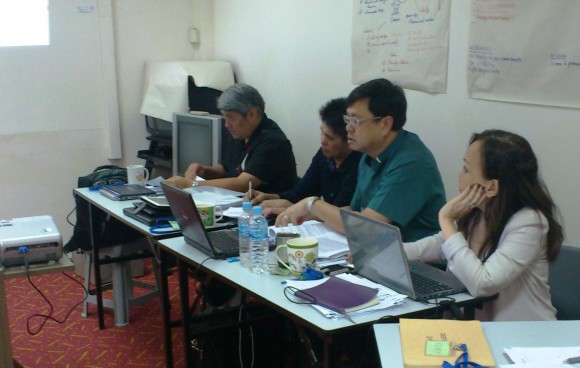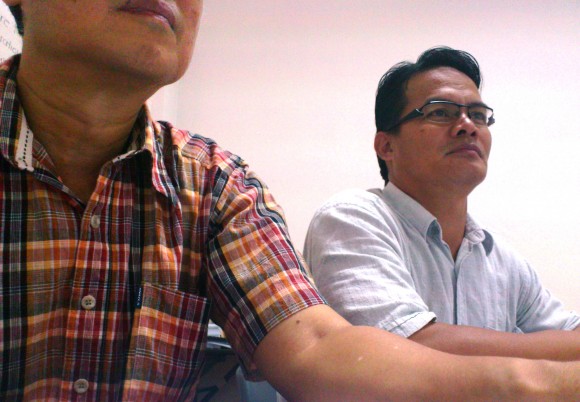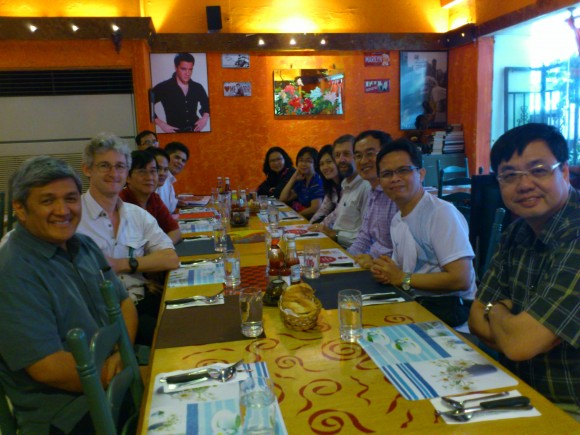Five are Bible college lecturers, four are pastors, two are in para-church organizations, two are in transition. Five are Malaysians, four are Singaporeans, two are Filippinos, one an Australian and one Thai. All were here for the AGST Alliance masters/ doctoral module on Education, Spiritual Formation and Discipleship in Christian Faith Communities: Interdisciplinary overview and rationale. Yes it is a rather massive and ponderous title for a module, and we took a morning to unpack the lexical complexity, and overlapping concepts of the terms. This was much needed work as this module is a core and foundational course upon which the course superstructure would be built upon. I found the course immensely useful and stimulating. We looked at the subject from different  perspectives: philosophical, biblical, historical, educational, technological and architectural. Sounds quite intellectual, and it was. But it was also interactive, collaborative. We had two guests, an architect and a Singapore Bible College lecturer who was an “Apple evangelist”. The course was mentally draining, and the assignments were practical, designed to achieve the stated outcomes. They look challenging, but should be doable. Having done the course just before Holy Week, I have hardly had time to digest and process what I learned or to start on any of the assignments. The comfort as I juggle ministry and study, is that the assignments given are all relevant to the community I am in, and require me to do further research, and understand and apply what I have learned. In addition, the study is relevant to the ministry at hand, and could be a basis of actual change action. On the whole I liked it, and it was nice to get to know more of the Lord’s servants in South East Asia. It was nice to get acquainted with Rev Winston Tan, whose late wife was my TTC classmate, and Ying Kheng, a popular lady speaker with Campus Crusade, and Sonny, a Singaporean of Filippino descent, who has pastored in a few countries and is bi-vocational.
perspectives: philosophical, biblical, historical, educational, technological and architectural. Sounds quite intellectual, and it was. But it was also interactive, collaborative. We had two guests, an architect and a Singapore Bible College lecturer who was an “Apple evangelist”. The course was mentally draining, and the assignments were practical, designed to achieve the stated outcomes. They look challenging, but should be doable. Having done the course just before Holy Week, I have hardly had time to digest and process what I learned or to start on any of the assignments. The comfort as I juggle ministry and study, is that the assignments given are all relevant to the community I am in, and require me to do further research, and understand and apply what I have learned. In addition, the study is relevant to the ministry at hand, and could be a basis of actual change action. On the whole I liked it, and it was nice to get to know more of the Lord’s servants in South East Asia. It was nice to get acquainted with Rev Winston Tan, whose late wife was my TTC classmate, and Ying Kheng, a popular lady speaker with Campus Crusade, and Sonny, a Singaporean of Filippino descent, who has pastored in a few countries and is bi-vocational.
Stay calm and rest in Him
The sensible thing to do is to stay calm and take stock, and gather the faith community for prayer, discussions and discernment. It seems like the government is hoping to address this issue by putting the onus on the landlords and developers so far. It isn’t expecting overnight changes. Churches need time to move and tenancy agreements require sensitive re-negotiations. The government is aware of this. Churches in industrial space (CIS), especially if they have not been reported in the newspapers need to stand still and look at the ramifications and discuss the possible scenarios and alternatives they have. There are legalities and ethical factors not just geographical factors to weigh.
Shelter in churches already with buildings
One of the alternatives to consider is the use of other churches in proper buildings and request to use those places temporarily or 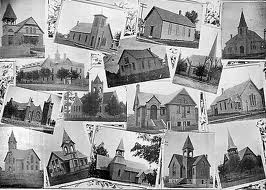 permanently during a Sunday afternoon, evening or a Saturday evening slot, where it may be available for rent. During crisis like this, churches need to open their doors in the love of Christ for the brethren. A shelter, even for a period of time, until a firmer direction can be set by the affected church, is an act of mercy and charity. It is what being church is all about.
permanently during a Sunday afternoon, evening or a Saturday evening slot, where it may be available for rent. During crisis like this, churches need to open their doors in the love of Christ for the brethren. A shelter, even for a period of time, until a firmer direction can be set by the affected church, is an act of mercy and charity. It is what being church is all about.
Organic church and in the house
Another consideration which may seem radical is to take a page from the book of Acts and be church in the household (oikos). For the first three centuries of the early church, the believers deliberately refused to model themselves after the synagogue or the pagan temples, the main religious buildings they have experience of. There is something about the household that makes it an ideal environment for making disciples and growing the faith community (incidentally, when news broke, I was attending a master’s program that dealt partly with this, and I hope to share it in later posts). A small church of 70 would have seven homes where they could meet on Sundays and end with a potluck lunch. Of course the music will have to be Quaker style or catacombs style not 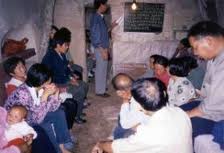 contemporary style. On lazy mornings neighbours can be sensitive to “noise”, even a “joyful noise”. Alternatively, for the more radical, why not Saturday afternoon or evening, or even Friday evening for “church”. This could include a once a month, or bi-monthly or quarterly combined celebration in a rented hall. You could call this the organic alternative – no pesticides, no preservatives, no artificial colouring, no trans fats or cholesterol.
contemporary style. On lazy mornings neighbours can be sensitive to “noise”, even a “joyful noise”. Alternatively, for the more radical, why not Saturday afternoon or evening, or even Friday evening for “church”. This could include a once a month, or bi-monthly or quarterly combined celebration in a rented hall. You could call this the organic alternative – no pesticides, no preservatives, no artificial colouring, no trans fats or cholesterol.
Well trodden route
Of course the well trodden route is to rent the space in hotels, private schools, cinemas, association halls, and other commercial space available. These were the main places of churches before they became too expensive and drove churches to consider industrial space. This does not need much elaboration, but it is a temporary alternative until a firmer direction can be set.
Commercial space
Going for commercial space or ventures is a fifth consideration. CIS are usually small churches and are not in the financial position to 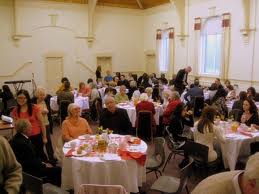 take the route of City Harvest Church and New Creation Church with their 8-9 figure budgets. There are however smaller business enterprises that could be used on Sundays for a church gathering. This way the property is used all week, unlike most churches which lie idle most of the weekdays. At the same time, a church that starts a business enterprise for use as worship place on Sundays also provides jobs for others and contributes to the economy or help society. Limitations include a space limit, a small percentage of total development, and usage for only two of seven days a week.
take the route of City Harvest Church and New Creation Church with their 8-9 figure budgets. There are however smaller business enterprises that could be used on Sundays for a church gathering. This way the property is used all week, unlike most churches which lie idle most of the weekdays. At the same time, a church that starts a business enterprise for use as worship place on Sundays also provides jobs for others and contributes to the economy or help society. Limitations include a space limit, a small percentage of total development, and usage for only two of seven days a week.
Community service arm
A more sacrificial path, and similar to the commercial path in that the building is used all week, is to do community service and start a centre that ministers to society’s pain and cries. Whether it is for the elderly or the very young, the addicted or the afflicted, there are many needs that the government would be happy for the church to lend a voluntary hand and a good inflow of finances.
Partners in development
 Two other alternatives remain. One is to find several churches to partner and get all the cash and minds ready to go into a joint development of a private religious or HDB site into a multi-storey building that would cost close to 30 million dollars. This has been done before: twice in Yishun, in Clementi, in Jurong West. Perhaps the government could have a hand in this and release HDB sites specifically for several small and medium sized churches to share a building.
Two other alternatives remain. One is to find several churches to partner and get all the cash and minds ready to go into a joint development of a private religious or HDB site into a multi-storey building that would cost close to 30 million dollars. This has been done before: twice in Yishun, in Clementi, in Jurong West. Perhaps the government could have a hand in this and release HDB sites specifically for several small and medium sized churches to share a building.
Mergers
The last alternative is often last of alternatives for CIS to consider but the Lord may lead them to do so. The alternative here is to merge with another church of similar or smaller or bigger membership. This of course has to be done gingerly and with much wisdom and prayer, and with a match maker too, maybe a “social development unit” can be set up by Love Singapore, or EFOS or some other body, to professionally help such mergers or even acquisitions happen. Or the small churches should form a network, association, or co-operative to help each other. Such are the times where we will get to see the gift of apostleship manifest. Organizers and mobilizers we have many, but when the crunch comes, the spiritual fathers of the church will surface.
Pilgrims on a journey
The bottom line is that all faith communities pilgrims on a journey like our forefather Abraham. Steps have to be taken by faith with uncertainty as our shadow and Jesus as our constant companion. We face trials and difficulties but we are resilient and hopeful because our destination is sure, though not our route. The Lord God goes before us and causes all things to work for the greater glory of God. All that is temporal will in the end be shaken, but what is eternal and will be left standing is the unshakeable kingdom of God.
Line drawn with a click
Last week, Mr Khaw Boon Wan, the minister of national development made some comments that would throw many churches off balance. He  blogged about wanting to help small and medium enterprises cope with rising industrial rent. One of the causes of the increase in rents, according to the minister, is the improper usage of industrial space by shops, tuition centres, furniture showrooms, offices and churches. This demand had pushed the rents up. Industrial space is meant only for warehousing, manufacturing, production, e businesses, IT infrastructure and software development, and child care centres, as they support the industries nearby. If tenants are found to be using space improperly, the penalty may be a fine of up to $200,000 or jail of up to a year. In the past eyes have been closed to this creeping intrusion, but the line was drawn with a click.
blogged about wanting to help small and medium enterprises cope with rising industrial rent. One of the causes of the increase in rents, according to the minister, is the improper usage of industrial space by shops, tuition centres, furniture showrooms, offices and churches. This demand had pushed the rents up. Industrial space is meant only for warehousing, manufacturing, production, e businesses, IT infrastructure and software development, and child care centres, as they support the industries nearby. If tenants are found to be using space improperly, the penalty may be a fine of up to $200,000 or jail of up to a year. In the past eyes have been closed to this creeping intrusion, but the line was drawn with a click.
A hidden agenda?
One wonders if the rationale for the stated action is reasonable and able to deal with the root cause of increased rents. As pointed out by a Straits Times reporter in a later article, there were other major factors driving the rents up: the movement of speculators and investors from residential, due to the spiked stamp duty, to industrial space; the farming out of development and management of industrial space to private entities and REITS; and most crucial of all, the tender method used to award industrial space. If they really want the operating costs for SMEs lowered, shouldn’t they be tackling the problem at its roots and with a macro and a multi-prong approach? In the context of what has happened in recent years to churches it is difficult for the affected parties not to speculate if there is some hidden agenda being pushed or whether things are really as stated in the official communiqués. I do not  believe there is anything sinister underneath: just a secular government wanting to act rationally and firmly without fear or favour.
believe there is anything sinister underneath: just a secular government wanting to act rationally and firmly without fear or favour.
Reactions to the line drawn
Reactions from pastors and their churches, usually small and medium sized, have been muted. It ran from a scramble for alternate places of worship this Sunday to a deliberate approach of study and discussion of exit strategy. Some would be indignant, while others would be matter of fact, stoic and practical. Most would be found in a place of prayer and peace, consulting with others, exploring alternative strategies, and looking to the Head of the body for help and guidance.
Off-the-cuff ramifications
When I asked a close friend of mine, what he thought were the ramifications, he emailed me his off the cuff answer. It’s not rocket science but some of the scenarios are sure to pan out over the coming months:
“My immediate off-the-cuff take:
1. More & more churches will be hunting new homes.
2. More & more churches would be thinking of going into “joint-ventures” and partner each other in home hunting. Maybe this will even lead to churches not only combining resources but really combining their congregation together.
3. Industrial buildings is now a no-no; maybe the next best choice is a commercial building.
4. Both of the above are mostly on 30-, 60- year leases. There would be some 99 or freehold – but of course the pricing is different.
6. The other route is to take what some mega churches are doing; a la THE ROCK; building & investing in commercial projects (with auditoriums & church facilities) and at the same time use this facility during weekend”.
Small churches won’t disappear
It is seriously doubtful that industrial rent can be moderated without a concerted multi-prong strategy. On the other hand, I am absolutely  certain that such an action cannot break the spirit, resilience, and productivity of the small church, even if this was not the intention of the ruling. Small churches are like mustard seeds and trees. Mustard seeds are tiny and the full grown mustard tree grow to a small 10-15 feet maximum. But the seeds and plants are renowned in ancient days for their quickness in germinating and taking root, and taking over space, and growing in unlikely environments and conditions. Though useful they are treated like weeds and are unwanted. But then, they are almost impossible to get rid of. So the small churches. It’s a reality large and mega-churches and governments need to acquiesce to. Even communist China with all its powers failed to rid itself of the small church! Small churches are muscular, resilient, and omnipresent, and their tiny seeds will disperse with the wind of the Spirit and many more small churches will sprout!
certain that such an action cannot break the spirit, resilience, and productivity of the small church, even if this was not the intention of the ruling. Small churches are like mustard seeds and trees. Mustard seeds are tiny and the full grown mustard tree grow to a small 10-15 feet maximum. But the seeds and plants are renowned in ancient days for their quickness in germinating and taking root, and taking over space, and growing in unlikely environments and conditions. Though useful they are treated like weeds and are unwanted. But then, they are almost impossible to get rid of. So the small churches. It’s a reality large and mega-churches and governments need to acquiesce to. Even communist China with all its powers failed to rid itself of the small church! Small churches are muscular, resilient, and omnipresent, and their tiny seeds will disperse with the wind of the Spirit and many more small churches will sprout!


